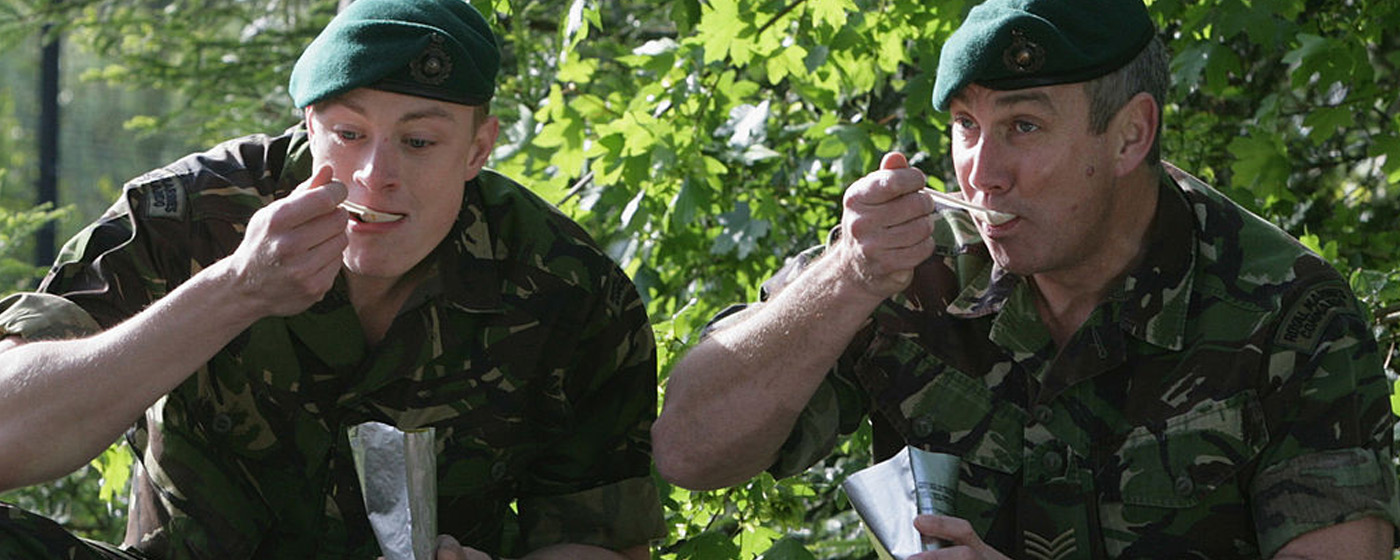Military rations
Food supplies for troops have often determined the outcome of wars. Until the invention of appertisation in the 19th century, bread and salted meat formed the staple diet of soldiers serving on the front. The Navy favoured beer, wine and rum, which were easier to store than water. Tinned food found its way into soldiers’ kits in the First World War and was replaced by complete meals in hermetically sealed bags in the 1980s.
‘Bread for the soldiers’: a short history of combat rations
Napoleon is renowned for having said that “An army marches on its stomach”. Throughout the course of history, food supplies for the troops often determined the outcome of battles. Before the invention of appertisation and then the tin can in the 19th century, bread and dried, salted meat formed the basis of military rations.
The first professional army in the West belonged to Ancient Rome. Each of its soldiers received a ration of two pounds of bread a day, meat, olive oil and wine. Under the Byzantine Empire, infantrymen were trained to each carry rations which could keep up to twenty days. Furthermore, a small hand mill was part of their basic equipment and was used to grind grain to make paximadion, a hard, dry bread which kept for a long time. The army often requisitioned raw materials from local populations during military campaigns. Sometimes soldiers even used their own pay to buy food to supplement or vary their diet.
Conditions were even more difficult for the Navy. During the Napoleonic Wars, the British Navy, for example, used the ‘four for six’ rationing system, meaning there were four servings for every six men. The staple food was also bread, in the form of a hard, dry biscuit made with pea flour and crushed bone. The salted meat was so hard that the sailors preferred to sculpt it to help pass the time. Water, a rare and perishable commodity, was replaced by alcoholic drinks, which were safer and easy to store: firstly by beer, then wine when this ran out and finally rum.
The invention of the tin can by Peter Durand in 1810 revolutionised military rations. During the First World War, iron rations were used on a large scale. For the first time, soldiers were guaranteed a few vegetables in their mess tins. British battalions, for example, had two industrial-sized containers for cooking, but the meals hardly ever reached the soldiers serving on the front line. They had to make do with maconochie, a stew made from turnips and carrots, which they would heat up in the can.
Between the two wars, the American army developed three types of nutritious rations that were light to carry. The C-ration was used from the Second World War up to the Vietnam War. It consisted of three types of tinned meals - beef with potatoes, rice or pasta, accompanied by three biscuits, toffee, a few sugar cubes, a packet of instant coffee and a tin opener. The D-ration was an emergency ration in the form of a chocolate bar. It was developed to be light and nutritious, but not too appetising so that soldiers only ate it when they really needed to. The K-ration was a smaller and lighter version of the C-ration, for troops on the front line of battle, at the Normandy Landings for example.
In the 1980s, the American army did away with tinned food and replaced it with hermetically sealed bags containing MRE (Meals, Ready to Eat). The ‘menus’ were now quite varied with almost 24 different dishes, including vegetarian, kosher and halal versions.
“Tell me what you eat and I’ll tell you what you are”
Throughout history, soldiers have been given food nicknames. Legionnaires in Ancient Rome, were nicknamed bucellarii, after bucellatum, the bread which formed their staple diet, whereas, in the 19th century, British sailors were saddled with the name limey after citrus fruit was introduced into their diet to combat scurvy.
FLANDRIN, Jean-Louis et MONTANARI, Massimo, 1995. Histoire de l'alimentation. Paris : Fayard.
HALDON, John, 1999. Warfare, State and Society in the Byzantine World 560-1204. New York : Routledge. 978-1-857-28494-2.
MASEFIELD, John, 1905. Sea Life in Nelson's Time. London : Methuen.
War Culture - Trench Food, 2012. October, Londres : s.n., Military History Monthly.









